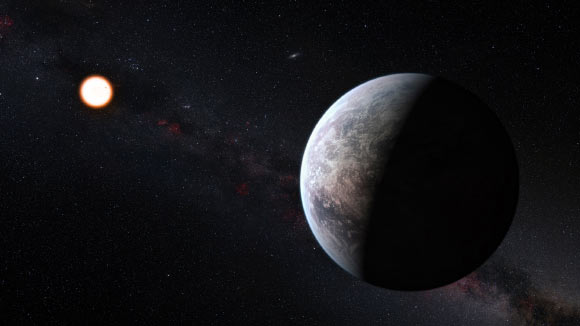An international team of astronomers has discovered a planetary system containing at least three massive planets, orbiting the bright late-G/early-K-type dwarf star K2-229. What’s the most intriguing is that one of these extrasolar planets is a super-Earth class object with a Mercury-like composition.
K2-229, also known as EPIC 228801451, TYC 4947-834-1 and 2MASS J12272958-0643188, is located in the constellation of Virgo, approximately 339 light-years away from Earth.
In order of increasing distance from the host star, the three newfound planets are dubbed K2-229b, c and d.
The inner planet has a radius of 1.2 Earth radii and a mass of 2.6 Earth masses, hence a bulk density of 8.9 g/cm3.
The planets K2-229c and d have masses less than 21.3 and 25.1 Earth masses, and radii of 2.12 and 2.65 Earth radii, respectively.
Compared with Mercury, K2-229b orbits much closer to its parent star, with an orbital period of about 14 hours. Its day-side temperature can reach up to 2,330 K (3735 degrees Fahrenheit, or 2,057 degrees Celsius), assuming synchronous rotation.
These conditions make K2-229 b potentially more sensitive than Mercury to mantle evaporation. At this temperature, the mantle in the day-side of the planet is expected to volatilize into a saturated atmosphere of silicate vapor.
“Mercury stands out from the other Solar System terrestrial planets, showing a very high fraction of iron and implying it formed in a different way,” said team member Dr. David Armstrong, from the Astronomy and Astrophysics Group at the University of Warwick, UK.
“We were surprised to see an exoplanet with the same high density, showing that Mercury-like planets are perhaps not as rare as we thought.”
“Interestingly K2-229b is also the innermost planet in a system of at least three planets, though all three orbit much closer to their star than Mercury.”
The dense, metallic nature of K2-229b has numerous potential origins, and one hypothesis is that its atmosphere might have been eroded by intense stellar wind and flares, as the planet is so close to its star.
Another possibility is that K2-229b was formed after a huge impact between two giant astronomical bodies in space billions of years ago — much like the theory that the Moon was formed after Earth collided with a body the size of Mars.
“More discoveries like this will help us shed light on the formation of these unusual planets, as well as Mercury itself,” Dr. Armstrong said.
A research paper detailing the team’s findings was published online this week in the journal Nature Astronomy.
Source: Sci News

































Leave a Comment
You must be logged in to post a comment.